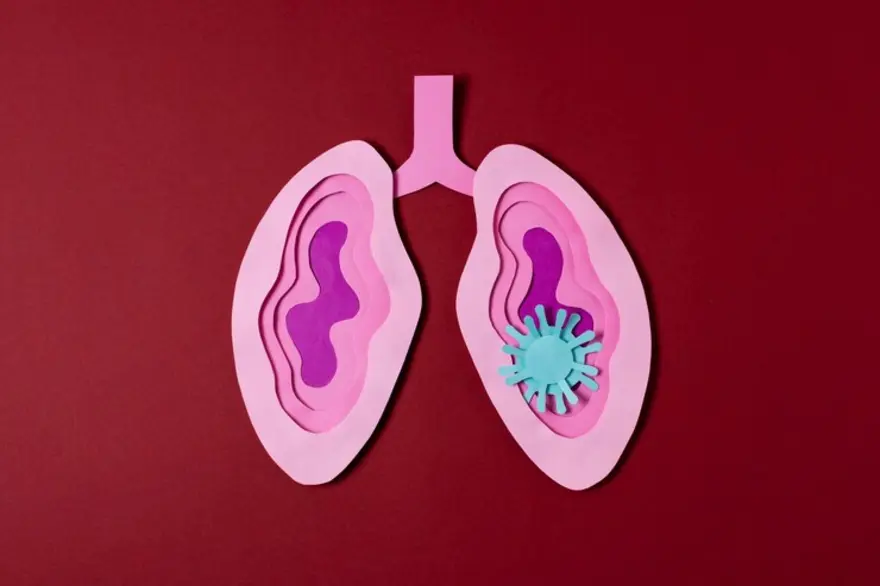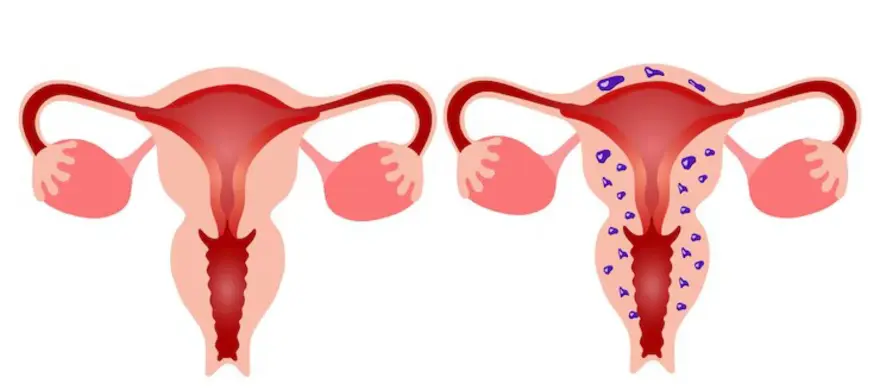Preventive Healthcare
Decoding ALS: A Comprehensive Guide
170 Views
0

Amyotrophic lateral sclerosis is a tough situation, which takes away people's ability to move, speak and breathe. Starting from the brain and the spine, it slowly weakens the muscles and causes a lot of physical and emotional pain. It cause a difficulty even in simple things like moving, due to which people become dependent on others to get help. Despite many research, there is still no healing for ALS. This shows why it is so important for people to be aware of this and support those affected. This article focuses on the causes of ALS, its symptoms, how it is diagnosed and how people deal with it, and shows the challenges that patients and their families face.
What Is Amyotrophic Lateral Sclerosis (ALS)?
Amyotrophic lateral sclerosis (ALS), also known as Lou Gehrig's disease, is a progressive neurological disorder that affects motor neurons and nerve cells which are responsible for controlling the voluntary muscles. This condition leads to the gradual decay and death of these neurons, resulting in muscle weakness, twitching, and eventually paralysis. ALS typically starts with muscle weakness in one limb or difficulty in speaking or swallowing, and then it progressively spreads throughout the body, causing significant disability.
Who Gets ALS?
Amyotrophic lateral sclerosis can affect people of any race or ethnic group between the ages of 40 and 70. However, the disease can strike at any age, with symptoms most often developing between the ages.
Familial ALS, this condition is hereditary and it accounts for approximately 5% to 10% of cases. While the exact cause of ALS is still unknown, it is estimated that every 90 minutes someone is diagnosed with ALS.
amyotrophic lateral sclerosis types
Amyotrophic lateral sclerosis (ALS) manifests primarily in two types:
- Sporadic, which occurs without a family history
- Familial, which has a genetic component.
What Is The Life Expectancy For People With ALS?
The average ALS life expectancy for individuals is usually about 2 to 5 years after symptoms appear. However, it can vary widely depending upon the various factors such as age, disease progression and the presence of certain prognostic factors. Approximately 10-20% of ALS patients may survive longer than 10 years.
What Causes ALS?
The exact cause of amyotrophic lateral sclerosis is not fully understood, but it is thought to be caused by a combination of genetic and environmental factors. Approximately 5 to 10 percent of ALS cases are familial, which is caused by an inherited gene mutation. Mutations in genes such as SOD1, C9ORF72, TARDBP, and FUS are associated with familial ALS. In sporadic cases, which account for the majority of cases, the amyotrophic lateral sclerosis causes is unknown, but environmental factors such as exposure to toxins or viruses may play a role. Other potential factors include some occupations, including age, gender, heavy metals and chemicals.
What Are The Symptoms Of ALS?
Amyotrophic lateral sclerosis manifests through various symptoms mostly impacting the motor function.
- Common indications comprise of muscle twitching, weakness in the limbs, swallowing challenges, slurred speech, muscle cramps, and stiffness.
- Early amyotrophic lateral sclerosis symptoms may also encompass tripping, frequent dropping of objects, unusual fatigue in limbs, and fine motor task difficulties.
- Disease progression intensifies difficulties in speech, swallowing, and movement, culminating in weakened respiratory muscles and breathing complications.
- Amyotrophic lateral sclerosis symptoms typically deteriorate progressively, leading to profound disability over time.
How Is ALS Diagnosed?
Amyotrophic lateral sclerosis diagnosis involves a comprehensive evaluation by a healthcare provider, typically a neurologist. There is no single test to definitively diagnose ALS.
- Diagnosis relies on a combination of clinical examination, medical history review, and ruling out other conditions that may mimic ALS symptoms.
- ALS diagnosis tests may include electromyography (EMG), nerve conduction studies, MRI, blood and urine tests, and muscle biopsies.
- Amyotrophic lateral sclerosis diagnosis tests help assess muscle and nerve function, rule out other diseases, and support the diagnosis of ALS.
- The process may require multiple appointments and tests over time to monitor symptom progression and confirm the diagnosis.
How Is ALS Treated?
Amyotrophic lateral sclerosis treatment goals include symptom management, disease progression slowing, and enhancing the quality of life.
- Medications such as riluzole and edaravone are utilized to potentially slow down the advancement of the disease.
- Physical therapy, occupational therapy, and speech therapy play vital roles in preserving muscle function and communication abilities.
- As ALS progresses, the use of assistive devices like wheelchairs and communication aids becomes increasingly important for daily activities.
- Comprehensive amyotrophic lateral sclerosis treatment from a multidisciplinary team, including palliative care and respiratory support, is crucial for effectively managing ALS symptoms and enhancing overall well-being.
How Can Physical Therapy Treat ALS?
Physical amyotrophic lateral sclerosis therapy aims to manage symptoms by preserving muscle strength, flexibility, and mobility.
- Therapists design personalized exercise regimens targeting specific muscle weaknesses and preventing contractures and joint stiffness.
- Range of motion exercises are utilized to maintain flexibility and prevent muscle tightness, aiding in overall mobility and function.
- Breathing exercises and techniques are taught by physical therapists to enhance respiratory function and alleviate breathing difficulties.
- Education on safe mobility strategies is provided to facilitate independent movement, along with guidance on the use of assistive devices to improve quality of life.
How Can Occupational Therapy Treat ALS?
Occupational therapy helps in several manner such as:
- Occupational therapy helps the individuals with ALS in adapting to daily tasks and maintaining independence despite functional limitations.
- Occupational therapists assess an individual's abilities and design personalised strategies and modifications to simplify tasks and conserve energy.
- They recommend and provide training on using assistive devices and adaptive equipment to facilitate activities such as eating, dressing, and grooming.
- Additionally, occupational therapy addresses communication challenges and offers support in optimising work or leisure activities to enhance quality of life and promote meaningful engagement in daily routines.
How Can Speech Therapy Treat ALS?
Speech therapy, or speech-language pathology, helps individuals with amyotrophic lateral sclerosis maintain communication abilities as the disease progresses.
- Speech therapists assess swallowing function, recommend dietary modifications, and provide swallowing exercises to prevent aspiration and improve safety during eating and drinking.
- They also suggest techniques to compensate for speech difficulties, such as the use of alternative assistive and communication devices or strategies such as pacing and controlling breathing.
- In addition, speech therapy aims to treat cognitive communication disorders and provides support for maintaining social interactions and quality of life.
What Is The Outlook For People With ALS?
The outlook for individuals with ALS can be challenging, as it is a progressive and incurable disease. However, advancements in supportive care and symptom management have improved quality of life and prolonged survival. Despite its difficulties, many people find strength and support from loved ones and healthcare professionals throughout their journey with ALS.
What Are The Tips For Living With ALS?
Living with ALS can be challenging, but these tips can help:
- Stay connected: Regular communication with your healthcare provider will help you track the progression of your disease.
- Maintain good nutrition: Nutrient-rich foods support overall health.
- Seek support: Joining ALS support groups or seeking counselling can provide emotional support.
- Stay informed: Educate yourself about ALS and available resources to better manage symptoms and care.
Conclusion
To gain an understanding about Amyotrophic Lateral Sclerosis (ALS), we explored the symptoms, diagnosis, treatment, and tips for living with this difficult disease. Despite challenges, people with ALS can find support and hope through proactive management and a supportive community. Remember that ALS does not define you; rather, your strength and resilience are revealed in the face of adversity. As we strive for better understanding and care for ALS patients, services like Metropolis Labs stand ready to provide accurate diagnostic testing like blood and urine tests. Together, let's continue to support and advocate for those affected by ALS.
 Home Visit
Home Visit Upload
Upload














1701259759.webp)









 WhatsApp
WhatsApp